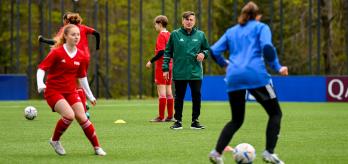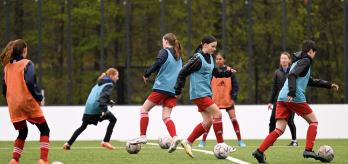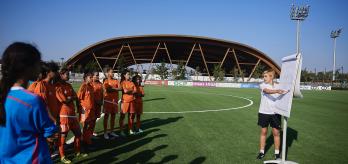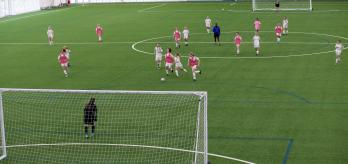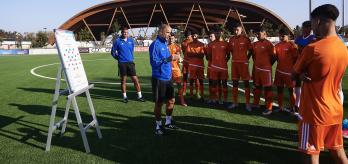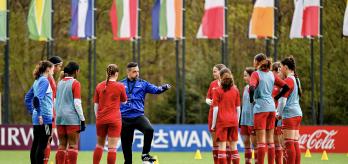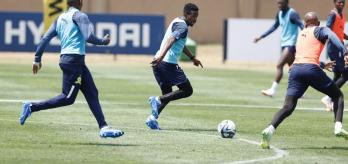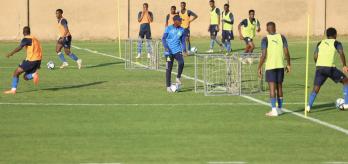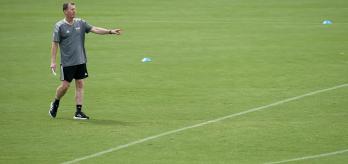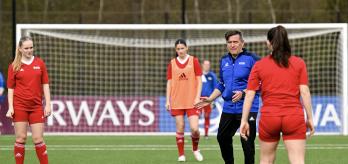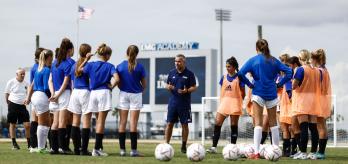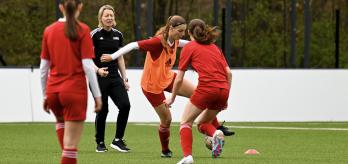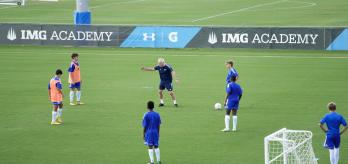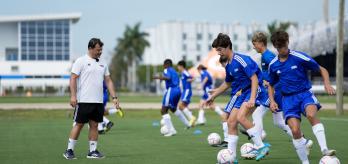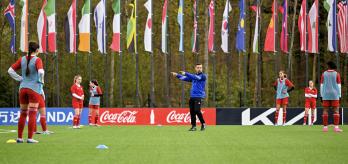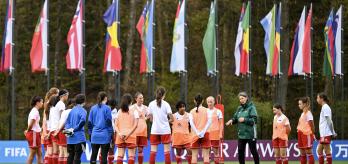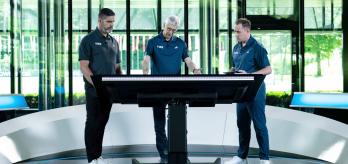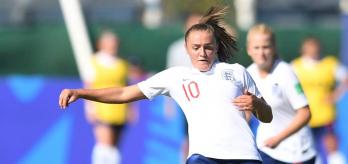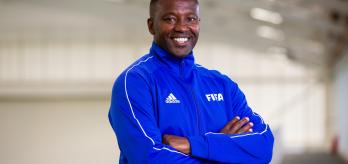Close control, correct body movements, effective feints and shimmies and recognising when space is opening up are all key aspects of ball mastery. By honing these skills, players will be able to dribble their way out of pressure, maintain possession in tight areas and create openings by beating defenders in 1v1s.
In this session, FIFA Technical Expert Branimir Ujevic delivers a series of exercises on ball mastery. The session starts with an unopposed dribbling exercise comprising several variations. The players then dribble towards and around one another using feints and close control, before replicating the first exercise in a dribbling game in which the players try to dispossess each other whilst maintaining control of their own ball. The session ends with an 8v8 game.
Session overview
Key coaching points:
-
Players should keep their heads up and eyes forward when dribbling so that it is easier for them to see obstacles and identify any space that may be opening up.
-
Close control is key to maintaining possession, and players should be able to use all parts of their feet.
-
Body movements such as shimmies, feints and delays can help players to evade opponents and progress the ball.
-
Players should drive the ball into the space as soon as it appears to avoid being dispossessed easily.
-
Players should try to anticipate where the space will open up by reading their team-mates’ movements and their opponents’ body positioning.
Part 1: Close control and dribbling
This first exercise works on ball control and footwork. The players should be able to continuously move the ball into space and avoid obstacles by using close control.
-
Mark out two 15x15m areas.
-
Split the players into two groups and position one group in each area.
-
Give each player a ball
-
The players must perform a variety of close-control and dribbling exercises.
-
The players must stay inside their designated area.
-
The players must dribble into the space and avoid contact with one another.
The players must complete the following variations whilst on the move:
-
Switch the ball from one foot to the other using the inside of each foot.
-
Switch the ball from one foot to the other using the soles of each foot.
-
Juggle the ball below hip height.
-
Push the ball away from their body using the outside of the foot and roll it back in using the sole of the same foot, then repeat on the other foot.
-
Juggle the ball above knee height.
-
Cruyff turns with their strong foot.
-
Cruyff turns with their weak foot.
-
Flick the ball into the air and bring it under control using the inside of the foot.
-
Flick the ball into the air and bring it under control using the outside of the foot.
-
The players should keep their heads up and eyes forward whilst dribbling so that they can recognise the available space to move into.
-
Close control is a priority, but knowing where to move the ball is just as important.
-
A relaxed posture helps the players to move fluidly, whereas a tight and rigid posture makes it more challenging for the players to dribble their way out of pressure smoothly.
-
By reading the situation, players can avoid colliding with team-mates and ensure that they are always moving the ball into space.
Part 2: Dribbling past an opponent
The focus of this exercise is for the players to combine quick footwork, feints, changes of direction and body movements to dribble past an opponent.
-
Mark out eight lines, with a cone at either end of each line and 15m apart.
-
Use alternate colour cones, so one line has red cones and the next one has blue cones.
-
Position a player on each cone, facing the player on the opposite cone.
-
Give each player a ball.
-
The players start by standing to the left of the cone with the ball at their feet.
-
The players on the red cones go first whilst the players on the blue cones wait.
-
The players run with the ball towards each other.
-
Once they meet in the middle, they perform a dribbling action to go around one another and continue to the opposite cone.
-
The players on the blue cones then carry out the exercise whilst the players on the red cones wait.
-
Repeat the sequence four times before introducing variations to increase the difficulty.
Variation 1
-
Perform two sequences with the right foot and two with the left foot.
Variation 2
-
Use the outside of the foot to dribble.
-
Perform three sequences with the right foot and three with the left foot.
Variation 3
-
Feint to go in one direction but dribble in the other direction instead.
-
Perform four sequences with the right foot and four with the left foot.
Variation 4
-
Once the players meet in the middle, they use close control and a change of direction to turn around and dribble back to their starting cone.
-
By swinging their leg back and delaying before taking a touch around their opponent, the players not only create a better angle to cut in but can also deceive the approaching player.
-
The players should use specific body movements to replicate real game conditions when taking on opponents.
-
The players should perform feints and shimmies to evade their opponent.
-
The players must keep their heads up and eyes forward so that they can see their opponent and decide where to move.
Part 3: Dribbling game
This exercise looks to put the principles of close control and quick footwork into practice by presenting an obstacle for the players to negotiate. They must feint and change direction, time their dribbles and protect their ball to win the game.
-
Mark out two 15x15m areas.
-
Split the players into two groups and position one group in each area.
-
Give each player a ball.
-
The players must dribble within the area for one minute.
-
The objective is for each player to dispossess their opponents whilst staying in control of their own ball.
-
If a player is dispossessed and their ball goes out of play, they are disqualified and must leave the area.
-
The winners are the two remaining players in each area.
-
Disqualified players must do push-ups.
-
Increase the difficulty of the exercise by making the area smaller so that the players have less space in which to operate.
-
Close control allows the players to avoid being dispossessed and helps them keep control of their own ball when dispossessing others.
-
Keeping their heads up and eyes forward will allow the players to move into the space and identify other players who are out of control of their ball susceptible to being dispossessed.
-
Feints, delays, turns and changes of direction will help players to avoid being dispossessed.
-
Players should look to dispossess their opponents by waiting for a cue, such as a heavy touch or distraction.
Part 4: 8v8+GKs
The final game allows the players to put everything they have learned into practice in the form of an 8v8 game. They must use close control, make good decisions, recognise the space and use the correct body movements when in possession.
-
Use one half of a full-size pitch, with a full-size goal and a goalkeeper at each end.
-
Split the group into two teams of 8.
-
The ball always starts with one of the goalkeepers.
-
The team in possession must try to score, whilst the opposition must defend and try to win the ball back.
-
The player in possession can only release the ball after a minimum of four touches.
-
There are no corners or throw-ins.
-
If a team scores, they restart with the ball.
-
Reduce the minimum number of touches to three before releasing the ball.
-
Allow the players to play freely.
-
Close control and the correct body movements will help the players to maintain possession for longer.
-
By recognising the space and identifying where it will open up, the players will be able to keep progressing the ball and avoid being dispossessed.
-
The players should attack the space as soon as it opens up to avoid being dispossessed easily.
-
The players without the ball for the team in possession should look to exploit the space. They should also try to support the player with the ball by reading their movement and finding the space to create passing lanes.
















